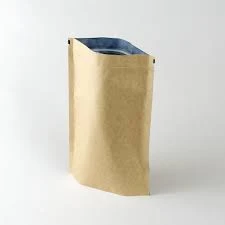- Afrikaans
- Albanian
- Amharic
- Arabic
- Armenian
- Azerbaijani
- Basque
- Belarusian
- Bengali
- Bosnian
- Bulgarian
- Catalan
- Cebuano
- chinese_simplified
- chinese_traditional
- Corsican
- Croatian
- Czech
- Danish
- Dutch
- English
- Esperanto
- Estonian
- Finnish
- French
- Frisian
- Galician
- Georgian
- German
- Greek
- Gujarati
- haitian_creole
- hausa
- hawaiian
- Hebrew
- Hindi
- Miao
- Hungarian
- Icelandic
- igbo
- Indonesian
- irish
- Italian
- Japanese
- Javanese
- Kannada
- kazakh
- Khmer
- Rwandese
- Korean
- Kurdish
- Kyrgyz
- Lao
- Latin
- Latvian
- Lithuanian
- Luxembourgish
- Macedonian
- Malgashi
- Malay
- Malayalam
- Maltese
- Maori
- Marathi
- Mongolian
- Myanmar
- Nepali
- Norwegian
- Norwegian
- Occitan
- Pashto
- Persian
- Polish
- Portuguese
- Punjabi
- Romanian
- Russian
- Samoan
- scottish-gaelic
- Serbian
- Sesotho
- Shona
- Sindhi
- Sinhala
- Slovak
- Slovenian
- Somali
- Spanish
- Sundanese
- Swahili
- Swedish
- Tagalog
- Tajik
- Tamil
- Tatar
- Telugu
- Thai
- Turkish
- Turkmen
- Ukrainian
- Urdu
- Uighur
- Uzbek
- Vietnamese
- Welsh
- Bantu
- Yiddish
- Yoruba
- Zulu
Innovative Sleeve Design for Enhanced Paper Protection and Presentation
The Versatility and Importance of Sleeve Paper in Modern Packaging
In the ever-evolving world of packaging, sleeve paper has emerged as a pivotal component, offering a combination of sustainability, aesthetics, and functionality. Sleeve paper refers to a thin layer of paper material that is designed to wrap around products, providing protection and branding opportunities. Its versatility spans across various industries, from food and beverage to electronics, and its significance is only expected to grow in the coming years.
One of the primary advantages of sleeve paper is its sustainability. In an era where environmental concerns are at the forefront of consumer preferences, businesses are increasingly seeking eco-friendly packaging solutions. Sleeve paper is often made from recyclable materials, making it a preferable choice over plastic alternatives. By opting for sleeve paper, companies can not only minimize their ecological footprint but also appeal to environmentally conscious consumers.
Moreover, sleeve paper enhances the branding experience. With a large surface area available for printing, businesses can effectively communicate their brand identity, product information, and marketing messages. The tactile experience of paper also adds a layer of authenticity and quality that plastic cannot replicate. For example, wine bottles often utilize sleeve paper labels that elegantly wrap around the glass, creating a sophisticated appearance that attracts consumers. The ability to customize colors, textures, and finishes further allows brands to create a memorable impression, distinguishing them in a crowded market.
In addition to aesthetics, sleeve paper provides practical advantages in packaging design. Its flexibility allows for easy adjustments in size and shape, making it suitable for a wide range of products. Whether it’s a small box of chocolates or a large electronic device, sleeve paper can be tailored to fit various dimensions, delivering optimal protection during transportation and handling. This adaptability reduces the need for excessive packaging materials, promoting efficiency in both production and logistics.
sleeve paper

The food and beverage industry, in particular, has recognized the potential of sleeve paper. With an increasing number of consumers looking for healthier and more sustainable options, brands are using sleeve paper to highlight their organic, natural, and local products. For instance, coffee brands often utilize sleeve paper to showcase their commitment to ethical sourcing and environmentally friendly practices. Additionally, sleeve paper can be designed to provide barrier protection against moisture and contaminants, ensuring food safety without compromising on style.
Another compelling aspect of sleeve paper is its role in enhancing user experience. Many products benefit from the convenience that sleeve packaging offers. Products such as takeout food, bottled beverages, and cosmetic items can be easily accessed while the sleeve maintains structure and protection. This ergonomic design encourages consumers to engage with the product while also making a statement about the brand’s values.
However, challenges do exist in the realm of sleeve paper. As with any packaging solution, it is crucial to ensure that the production processes are environmentally responsible. The raw materials sourced for sleeve paper must be sustainable, and manufacturers need to adopt practices that minimize waste during production. Additionally, brands must strike a balance between appealing design and practical functionality to meet consumer expectations.
In conclusion, sleeve paper has established itself as a vital player in the landscape of modern packaging. Its sustainability, versatility, and ability to enhance branding make it an attractive option for companies across various sectors. As consumer preferences continue to evolve, the demand for eco-friendly and aesthetically pleasing packaging solutions is likely to increase. By embracing sleeve paper, businesses not only participate in the movement towards sustainable practices but also tap into the emotional connection that consumers have with their products. The future of packaging looks bright, and sleeve paper will undoubtedly remain at the forefront of innovation in this space.













